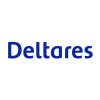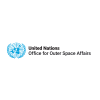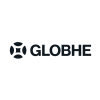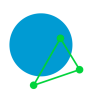Earth Observation
“Earth observation is the gathering of information about planet Earth’s physical, chemical and biological systems. It involves monitoring and assessing the status of, and changes in, the natural and man-made environment. In recent years, Earth observation has become more and more sophisticated with the development of remote-sensing satellites and increasingly high-tech “in-situ” instruments. Today’s Earth observation instruments include floating buoys for monitoring ocean currents, temperature and salinity; land stations that record air quality and rainwater trends; sonar and radar for estimating fish and bird populations; seismic and Global Positioning System (GPS) stations; and over 60 high-tech environmental satellites that scan the Earth from space.” (Group on Earth Observations, 2018).
"FAQ". Group on Earth Observations, Group on Earth Observations. 2019.
http://www.earthobservations.org/g_faq.html.
Accessed February 14, 2019.
Related Content
Article
基于卫星遥感的河流三角洲监测
Translated by Dr. Mengyi Jin
自古以来,河流三角洲因水资源丰富、土壤肥沃及交通便利而成为人类聚居的重要区域。这一格局延续至今。目前,生活在三角洲地区的人口已接近 60 亿,使其成为全球人口最稠密的地区之一(Kuenzer and Renaud 2011)。然而,这些三角洲地区正面临着气候变化、海平面上升、土地利用方式转变以及生态系统退化等威胁。遥感技术在获取环境状况及其时序变化方面具有显著优势,其在识别灾害前兆信号、预测自然现象演变等方面发挥着关键作用。在三角洲地区,遥感已被广泛应用于海岸线变化监测、洪水监测与预测等领域(Merkuryeva et al. 2015;Li and Damen 2010)。持续开展三角洲监测不仅有助于维护其生态功能,还能及时识别潜在风险,并为科学管理提供重要依据,而遥感正是实现这一目标的关键技术。
Wetlands conservation: How satellite observation supports sustainable wetland management
On 2 February 2020, we celebrate World Wetlands Day to raise global awareness about the vital role of wetlands for people and our planet. This year’s edition highlights the connection between water, wetlands, and life.
Conservación de humedales: cómo la observación por satélite apoya la gestión sostenible de los humedales
Translated by: Isabel Zetina
El 2 de febrero de 2020 celebramos el Día Mundial de los Humedales para concienciar al mundo sobre el papel vital de los humedales para las personas y nuestro planeta. La edición de este año destaca la conexión entre el agua, los humedales y la vida.
Monitoreando la escorrentía mediante datos de observación de la Tierra
Translated by Isabel Zetina
Cuando la lluvia cae sobre la Tierra, el agua empieza a moverse y a fluir cuesta abajo a través de alcantarillas y ríos en forma de escorrentía. La escorrentía es extremadamente importante para recargar las masas de agua de la superficie y las aguas subterráneas. Además, la escorrentía modifica el paisaje por acción de la erosión. Es una parte integral del ciclo del agua (Earth Science Data Systems 2021).
利用空间观测技术绘制小岛红树林分布图
Translated by Dr. Mengyi Jin
红树林因其自然景观和丰富的生物多样性而全球闻名,这一独特的生态系统在其所处的沿海环境中发挥着重要的作用。除了维持生物多样性,红树林还能有效抵御海岸侵蚀和风暴潮(Menendez et al. 2020),并具有很高的碳汇能力(Lovelock & Duarte 2019)。此外,红树林还有助于支持沿海居民生计, 维持海洋健康, 以及保护生物多样性(Dasgupta et al. 2022;Mallick et al. 2021)。尽管红树林在生态系统中具有关键作用,但据估算,自20世纪50年代以来,全球约有35%的红树林栖息地已被破坏或退化(Valiela et al. 2001)。受到人类活动和气候变化的影响,这一趋势预计仍将持续(Akram et al. 2023)。
Conservación de humedales: cómo la observación por satélite apoya la gestión sostenible de los humedales
Translated by: Isabel Zetina
El 2 de febrero de 2020 celebramos el Día Mundial de los Humedales para concienciar al mundo sobre el papel vital de los humedales para las personas y nuestro planeta. La edición de este año destaca la conexión entre el agua, los humedales y la vida.
Monitoreando la escorrentía mediante datos de observación de la Tierra
Translated by Isabel Zetina
Cuando la lluvia cae sobre la Tierra, el agua empieza a moverse y a fluir cuesta abajo a través de alcantarillas y ríos en forma de escorrentía. La escorrentía es extremadamente importante para recargar las masas de agua de la superficie y las aguas subterráneas. Además, la escorrentía modifica el paisaje por acción de la erosión. Es una parte integral del ciclo del agua (Earth Science Data Systems 2021).
Wetlands conservation: How satellite observation supports sustainable wetland management
On 2 February 2020, we celebrate World Wetlands Day to raise global awareness about the vital role of wetlands for people and our planet. This year’s edition highlights the connection between water, wetlands, and life.
Interview with Benjamin Kitambo, PhD student at the Laboratory for Space Geophysics and Oceanography
Call for contributions to the PaleBlueDOT challenge by NASA and the United States Permanent Mission in Vienna
Are you interested in leveraging public Earth observation data and visualization techniques to contribute to SDGS? You have until 26 January 2024 to sign-up to the PaleBlueDot challenge organized on behalf of NASA and the US mission to international organization in Vienna.
Interview with Benjamin Kitambo, PhD student at the Laboratory for Space Geophysics and Oceanography
Register for the 3rd Space4Water Stakeholder Meeting: Registration open
24-25 October 2023, at the Vienna International Centre
organised by the United Nations Office for Outer Space Affairs
co-organised with the Prince Sultan Bin Abdulaziz International Prize for Water (PSIPW)
This event is restricted to Space4Water stakeholders, featured professionals, young professionals and representatives of Indigenous communities featured on the portal.
Register for the 2nd Space4Water Stakeholder Meeting - End of registration: 30 April
organised by UNOOSA in partnership with the Prince Sultan Bin Abdulaziz International Prize for Water (PSIPW)
11-12 May 2023, Online
This event is restricted to Space4Water stakeholders, featured professionals, young professionals and representatives of Indigenous communities featured on the portal.
Registration for speakers submitting technical presentations closes on 15 April 2023.
Registration for all other participants closes on 30 April 2023.
Capacity Building and Training Material
ARSET - Assessing the impacts of fires on watershed health
Overview
This advanced-level training will focus on using remote sensing observations for monitoring post-fire impacts on watershed health, building off the ARSET training offered in 2021: Satellite Observations and Tools for Fire Risk, Detection, and Analysis.
Rapid Impact Assessment Using Open-source Earth Observation - on the example of the Kachowka Dam Break
The Jupyter notebook demonstrates how EOdal can be used for disaster relief after the break of the Kachowka using open-source Earth Observation data.
On June 6, 2023, the Kakhovka Dam in Ukraine broke. We do not yet know who or what was responsible for the collapse of the dam. What we do know, however, are the devastating consequences for the region downstream - especially for the local population.
Event
The 32nd IAF workshop on "Resilient coasts, resilient Earth: Innovative space solutions for coastal resilience and emergency management"

With the support of the United Nations Office for Outer Space Affairs, the workshop takes place in Sydney, Australia 26 to 28 September 2025, in conjunction with the 76th International Astronautical Congress (IAC 2025) at the International Convention Centre, Sydney.
EODC Forum 2024

EODC Forum 2024 – June 10 - 11
The EODC Forum 2024 will take place as an in-person event on Monday, June 10th (Start: 13:00 CEST) and Tuesday, June 11th, 2024 (Start: 09:00 CEST) at Kuppelsaal of TU Wien in Vienna.
Join us to reflect on 10 years of EODC and then celebrate with us at the networking dinner at Juwel Wien.
INBO WEBINAR From ground to orbit: combining in-situ and satellite monitoring of water to improve basin management

The webinar will take place on 22 April 2025 at 15:00 (CET) via Zoom. It is co-organised by International Network of Basin Organizations (INBO), Centre National d’Etudes Spatiales (CNES), World Meteorological Organization (WMO) in partnership with National Research Institute for Agriculture, Food and Environment (INRAE).
ESA-NASA International Workshop on AI Foundation Model for EO

ESA-NASA International workshop on AI Foundation Model for Earth Observation takes place on 5-7 May 2025 in Frascati, Italy. It is in-person only, but it will be streamed. The workshop is co-organised by the European Space Agency (ESA) and the National Aeronautics and Space Administration (NASA).
Local Perspectives Case Studies
Project / Mission / Initiative / Community Portal
WMO Hydrological Observing System Portal
Currently, WHOS makes available three data portals allowing users to easily leverage common WHOS functionalities such as data discovery and data access, on the web by means of common web browsers. For more information on WHOS data and available tools, please refer to the Section WHOS web services and supported tools.
WHOS-Global Portal provides all hydrometeorological data shared through WHOS. WHOS-Global Portal is implemented using the Water Data Explorer application.
Stakeholder
Person
Victor Mukununugwa
Senior Scientist Zimbabwe National Geospatial and Space Agency
Victor Mukungunugwa is a graduate Aerospace Engineer from the National Aerospace University of Ukraine. Upon completion, he acquired a cum-laude Honors BSc degree in Aircraft and Rocket Engineering in 2012. His first job was as an assistant lecturer and a lab technician at the University of the Witwatersrand in South Africa where he was doing his MSc in Unmanned Aerial Vehicle Designing. In 2013 he joined Terracam Professional UAVs Pvt Ltd where he acquired his drone pilot and worked as a senior project manager for aerial surveys.

Anam Bayazid
Intern United Nations Office for Outer Space Affairs
Anam Bayazid is an engineer with a passion for earth observation and space exploration technologies. Her academic journey involves pursuing a Master of Engineering in Systems Engineering with a concentration in Space Systems at Stevens Institute of Technology in United States. Her specialization is in systems modeling and simulation, as well as designing missions and systems for space exploration.

Sawaid Abbas
Assistant Professor Smart Sensing for Climate and Development, GIS Centre, University of the Punjab Centre for Geographical Information, University of the Punjab
Sawaid is a spatial data scientist who works at the nexus of earth science, ecology and climate change through leveraging remote sensing, machine learning, and strong domain knowledge. His key work involves forest succession, drought, and rangelands which were accomplished through collaboration with institutions like WWF, ICIMOD, ICRAF, AFCD, and KFBG.

Arjen Haag
Researcher / Consultant Hydrology and Water Management Deltares
Arjen is interested in the physical processes that shape our surroundings, especially the flow of water, and the proper management of our natural resources. He is a hydrologist and remote sensing analyst with a special interest in understanding high river discharges and floods. He combines hydrological knowledge with modelling, data-driven approaches and satellite observations, on topics ranging from water resource management to flood forecasting.

Gregory Giuliani
Senior Lecturer & Head of Unit at the University of Geneva and Head of the Digital Earth Unit United Nations Environment Grid Geneva
Gregory Giuliani is the Head of the Digital Earth Unit and Swiss Data Cube Project Leader at GRID-Geneva of the United Nations Environment Programme (UNEP) and a Senior Lecturer at the University of Geneva’s Institute for Environmental Sciences.
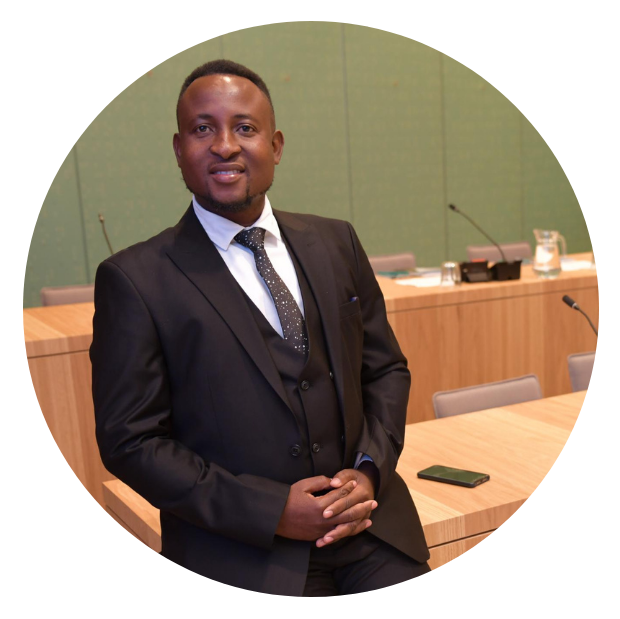
Webster Gumindoga
Lecturer University of Zimbabwe: Department of Construction and Civil Engineering
Dr. Webster Gumindoga is a research and innovation manager, lecturer and researcher at the University of Zimbabwe’s Construction and Civil Engineering Department. He is the coordinator of the postgraduate programmes in water management at the University of Zimbabwe where he has challenged regional students and researchers to use state of the art and open-source space data to solve water and environmental related challenges faced by the communities and industry.
































































































